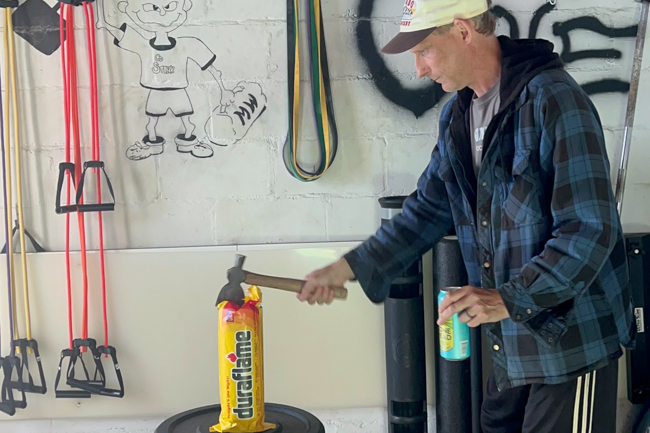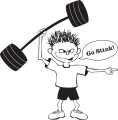Functional Fitness: Lumberjacks don’t need to work core strength

Originally published in South Coast Today.
BECAUSE OF THE JOB’S ACTIVITIES, A LUMBERJACK BUILDS CORE STRENGTH WITHOUT THE NEED OF A FITNESS REGIMEN DESIGNED AT THE GYM.
Core strength has become quite the buzzword these days at the local fitness center. Sure, it’s extremely valuable, but let’s not forget about extremity strength, which is also quite useful.
The early proponents of core strength made their case by using the cliché: a chain is only as strong as its weakest link. I like this analogy and this is why I prefer to think in terms of full-body strength rather than subdivisions, but if we’re going to look at separate links of the chain, the core is a great place to start.
The reason I say lumberjacks don’t need to get on stability balls and do planks and so forth is because swinging an axe, carrying logs, and picking up heavy stuff serves as a pretty good core workout.
These sort of physical laborers are constantly engaging their core muscles and using them in a very functional way. I think that Bill Belichick should start thinking about scouting lumberjacks or at least send his linemen to lumberjack school in the offseason.
In my program design, I often have my athletes start their workouts with core work because it’s prudent to show these important muscles some love. But it also serves as a good warm-up. And even though I use core exercises in my exercise prescription I would argue that if we performed enough good functional exercises we wouldn’t really need to work the core separately as its own category.
Past weightlifters didn’t specifically do a lot of core work, yet they enjoyed great core strength. So why did they exhibit great core strength despite the supposed lack of core training? Because they did a ton of squats and heavy overhead lifting. Like our friend the lumberjack, they were getting a great core workout without even trying.
To further illustrate my point, let’s look at the good, old-fashioned push-up.
This exercise is usually thought of in terms of upper body strength. Most people don’t do these for their core and most people wouldn’t categorize a push-up as a core exercise, but when you’re maintaining a good postural position as you’re going up and down, there is a great deal of core involvement.
Most of us feel muscular fatigue in the arms and chest, but that doesn’t mean the core isn’t working.
The plank is such a popular core exercise these days, but, after all, isn’t a push-up just a dynamic version of a plank?
For anyone who may be unfamiliar with a plank, there are many different forms, a more common version being performed from a push-up-like position. Lying face down with the points of support being your toes and forearms, try to maintain a straight line from your ankles to your ears, for a given period of time. Picture yourself in a full body cast lying across two sawhorses and you’ll be on the right track.
Many other traditional weight room exercises just so happen to double as core training so why not capitalize on these valuable exercises? I hate the expression multitasking, but I do love those exercises that address several areas of fitness at the same time.
Don’t worry about the six packs or doing 900 crunches a day, just pick some good functional complex movements and you’ll be killing many birds with one stone.

Norm Meltzer aka The Muscle-less Wonder
